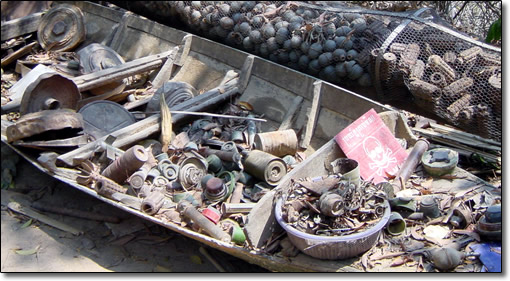
The Landmine Museum
Everywhere in Siem Reap there are people injured by war and landmines. Those who beg or perform for tourists naturally congregate around the temples and sites of Angkor, and on the town streets. Some play music or sell trinkets - but most beg. We gave them money, not much, but enough by local standards to survive another day. Not everyone resorts to charity, though. One day a boy with two artificial legs passed us riding a bike. He was tending cows for his family when he stepped on a landmine. Despite this, he was happy to practice his English and full of hope for the future. Although the number of accidents is steadily dropping, there will still be mines in the ground for many years to come. How could anyone not understand the need for a total ban on landmines after witnessing the results in Cambodia? At the landmine museum in Siem Reap a former child soldier, Aki Ra, displays a collection of mines and ordnance that he has collected during his career as a deminer. His story mirrors the political turbulence of Cambodia . As a child, he was recruited by the Khmer Rouge to fight and lay mines. When the Vietnamese invaded, he was recruited into their army, and fought against his former colleagues. Later, he worked to remove the mines he had laid as a child, eventually working for the United Nations ordnance team. Neither of us had ever seen a landmine before, and we were surprised by how small and compact they are. Behind the museum is a “mine field” where a small patch of ground is rigged with mines and booby-traps. Volunteers at the museum take in handicapped children and teach them languages and skills. Unfortunately we could not meet Aki Ra, because he was in the hospital for TNT poisoning.
